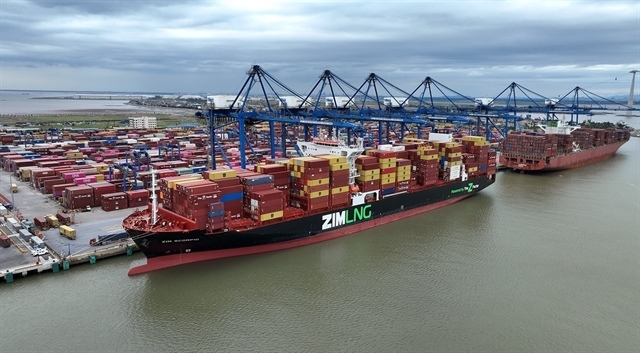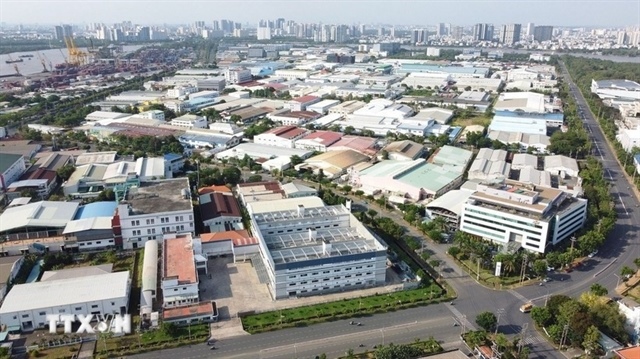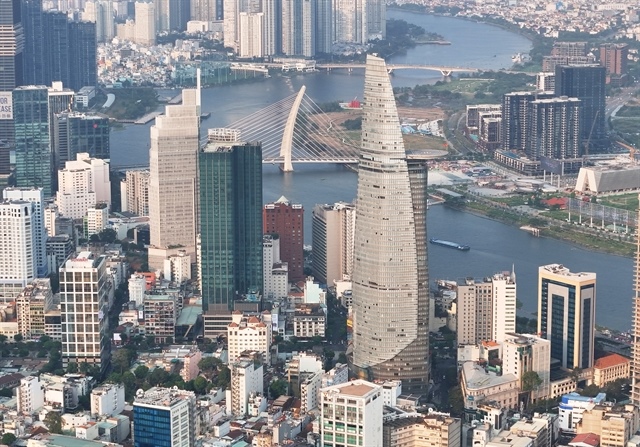VN urged to shift to productivity, innovation-based economy
VN urged to shift to productivity, innovation-based economy
Viet Nam should shift towards a more productivity and innovation-based economy while making the most of its ongoing demographic dividend to sustain high quality growth over the next decade.

This was among the main recommendations of a report delivered to the workshop on Viet Nam Economic Growth Model 2021-30 with a vision to 2045 held in Ha Noi on Wednesday.
The report by the World Bank and the Vietnam Academy of Social Sciences outlines a new economic model to help Viet Nam achieve high-quality growth in 2021-30.
The report, which is being prepared with support from the Australian government, proposes Việt Nam’s new economic model in 2021-2030 should centre around innovation and entrepreneurship, human capital and modern institutions.
“This report will help begin an exciting new chapter in Viet Nam’s economic growth story,” said Australian Ambassador to Viet Nam, Craig Chittick. “A chapter that embraces innovation, promotes bold reform and helps Viet Nam achieve its ambitious development goals.”
To avoid the middle-income trap, experts contend Viet Nam will have to maintain a growth rate in the range of 7 to 7.5 per cent in 2021-30, higher than the average rate of 6.3 per cent of the last 10 years.
According to Dr Bui Quang Tuan, head of the Viet Nam Institute of Economics, the country’s growth rate is fairly high, but still below the target of the 2011- 2020 strategy of 7 – 8 per cent annually despite the golden population structure.
Tuan recommended Viet Nam stay focused on the quality of growth and change the composition of contributions to growth.
Highlighting the advantages of science and technology and innovation, Tuan said, Viet Nam should make full use of two golden opportunities; Industry 4.0 and the golden population structure to achieve the fastest and highest quality growth.
“We are living in the era of disruptive technologies that presents both challenges as well as opportunities – I would like to call it ‘Doi Moi 4.0’,” said Ousmane Dione, Country Director for the World Bank in Viet Nam.
“To mitigate these risks and seize the opportunities Viet Nam needs to accelerate reforms that boost productivity and innovation as key drivers of growth in the coming decade, including steps to remove bottlenecks for private sector investment, enhance public sector institutions and invest in 21st century skills of the workforce.”
The report found that the labour-intensive, export-led growth model Viet Nam has pursued since 2011 has increasingly become obsolete in the context of the fourth industrial revolution, maturing global value chains, premature deindustrialisation and the rising role of services.
Dione said in the journey to become a high-income economy, what the country has been working on for the past 30 years may not necessarily work in the future.
The impacts of initial institutional and structural reforms seem to have reached their limit, said Dione.
“Adjustments and changes to the growth model are urgently needed if Viet Nam aspires to become a successful upper middle-income country by 2030 and a high-income country by 2045. Achieving this aspiration would require a strong and sustained performance over the course of more than 25 years, at least at the average rate of growth in the past 30 years.
“In addition, this target must be achieved in a challenging context. Domestically, Viet Nam is facing rising structural headwinds, including a rapidly aging population, declining impact of factor accumulation, as well as an increasing environmental toll on development.
“Globally, Viet Nam will have to navigate a changing terrain where shifting global trade and investment patterns seem to be less favorable for export-led growth and the Industry 4.0 is reshaping opportunities and creating new risks.”
Emphasising the importance of the discussion, Deputy Prime Minister Vuong Dinh Hue said the Government hopes to map out a national socio-economic development strategy to 2030 with a vision to 2045, the years that mark the 100th anniversary of the Party’s founding and 100th anniversary of the country’s independence respectively.
The Deputy PM said an economic growth model which focuses on improved quality and sustainability was emphasised at National Party congresses.
“The Party Central Committee has specified the economic growth model, using efficiency as a measurement of labour productivity, quality and competitiveness of the economy; and promoted the effective use of resources based on the market economy, moving towards a growth model based on investment and export,” Hue said.
“At the fifth plenary meeting of the 12th National Party Congress in 2017, science and technology and innovation were considered as a strategic breakthrough to realise the growth model.”
The workshop was organised by Vietnam Academy of Social Sciences, the Prime Minister’s Economic Advisory Group, the Ho Chi Minh National Academy of Politics, World Bank Vietnam and the Australian embassy in Ha Noi.





















